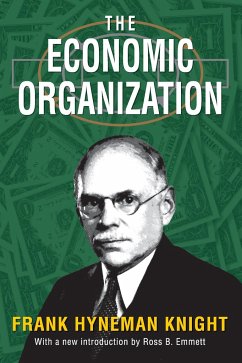
The Logic of Industrial Organization
Versandkostenfrei!
Versandfertig in 1-2 Wochen
59,99 €
inkl. MwSt.
Weitere Ausgaben:

PAYBACK Punkte
30 °P sammeln!
Covering issues as pertinent today as when the book was first published, The Logic of Industrial Organization discusses key themes in industrial relations, manufacturing, employment and investment and education for business administration. The book contains chapters on the following: The Structure of Industry; The Efficiency of Large-Scale Operation; Planned and Free Consumption; Forecasting and Market Research; Competition; Rationalization and Nationalization; Investment and Employment; Incentives to Work and Mobility; Stimulus to Enterprise and Administration.














